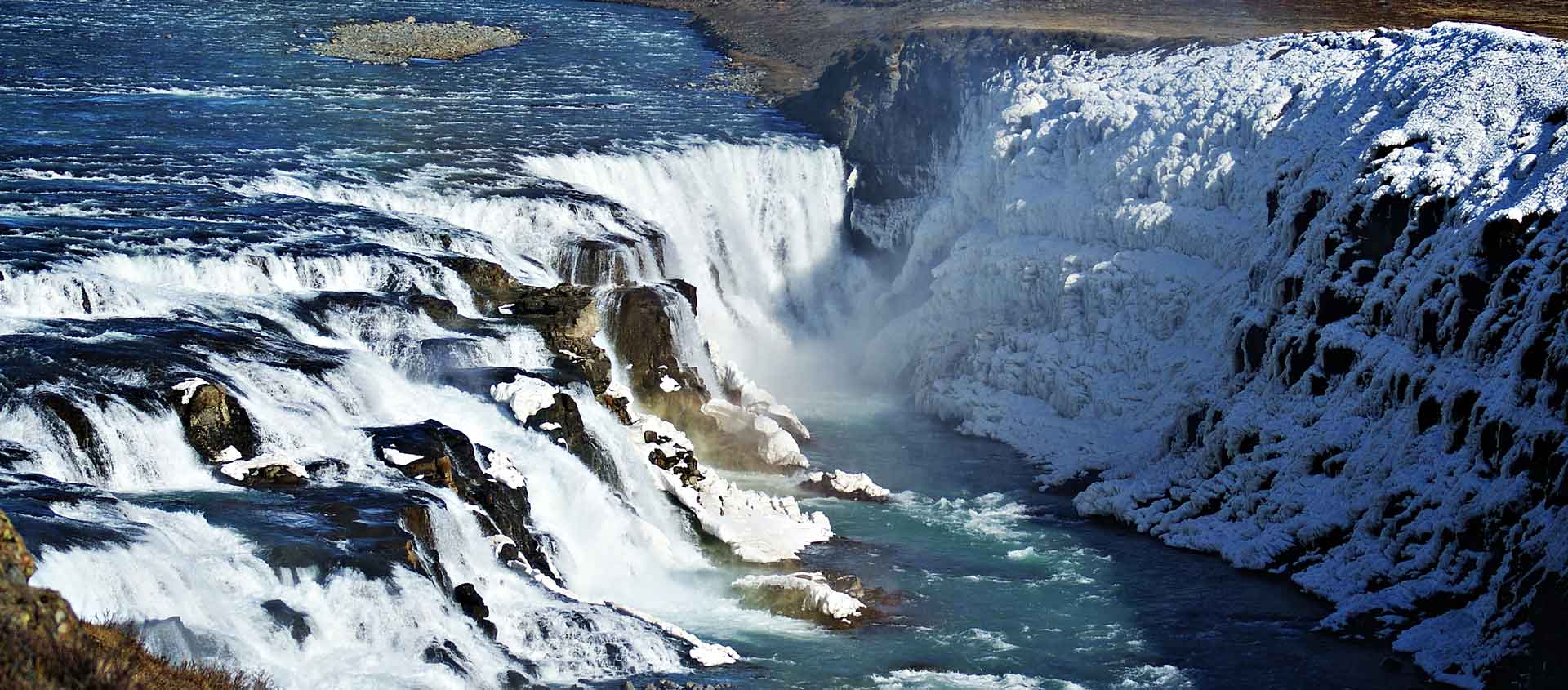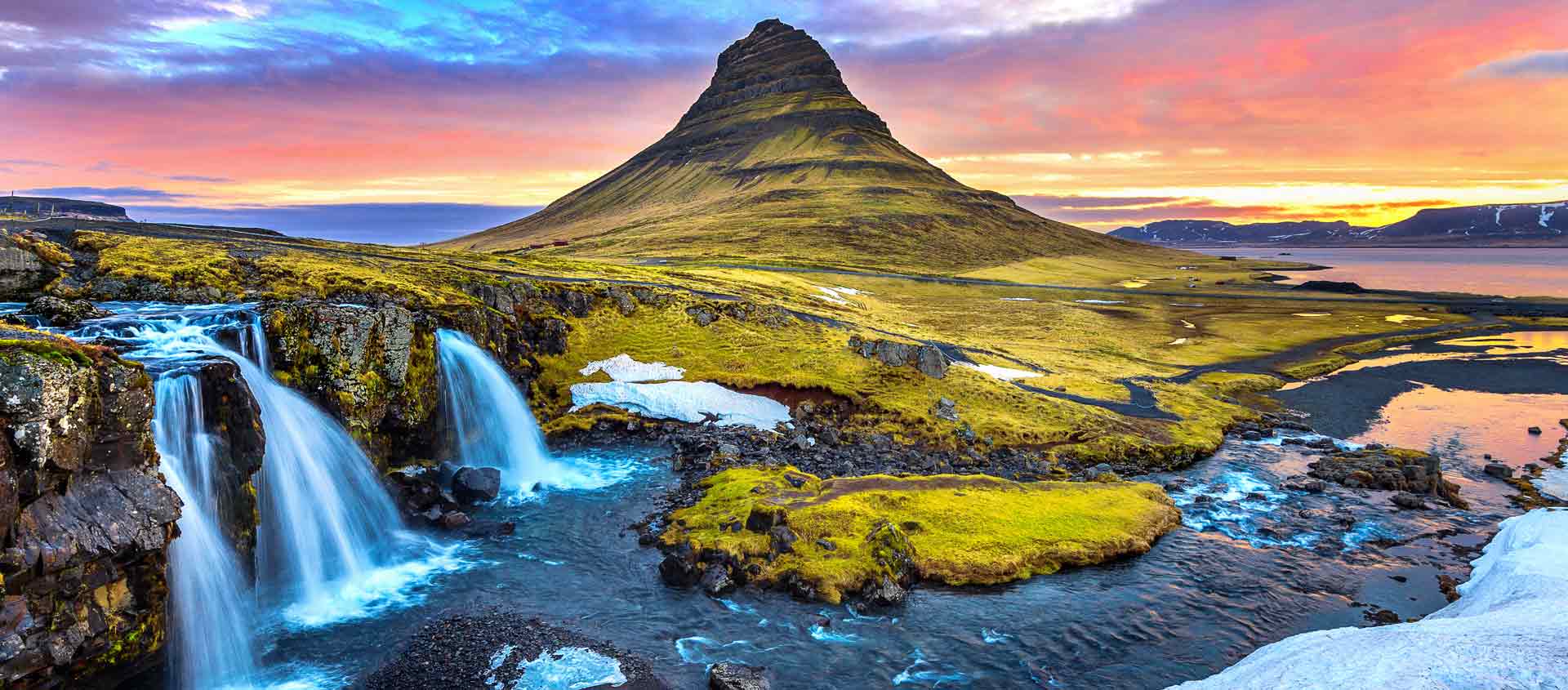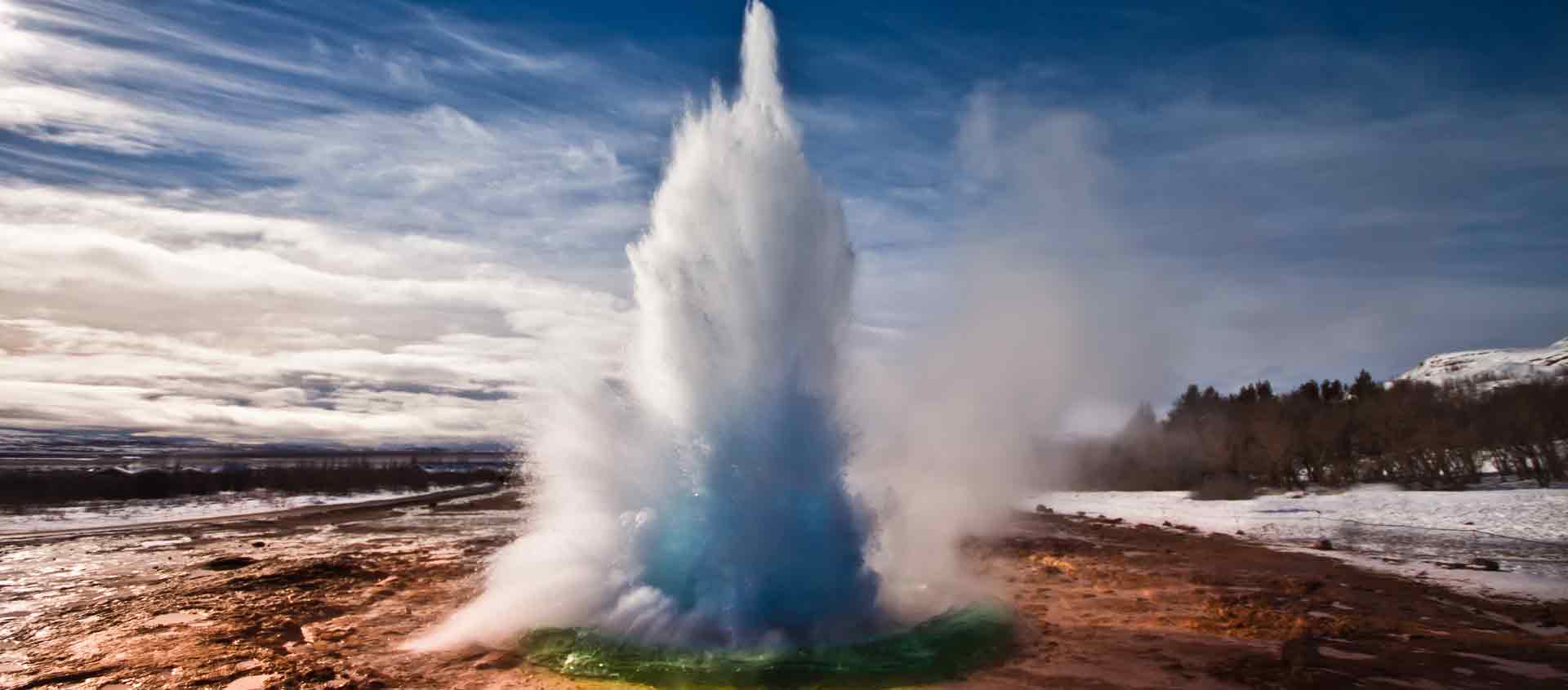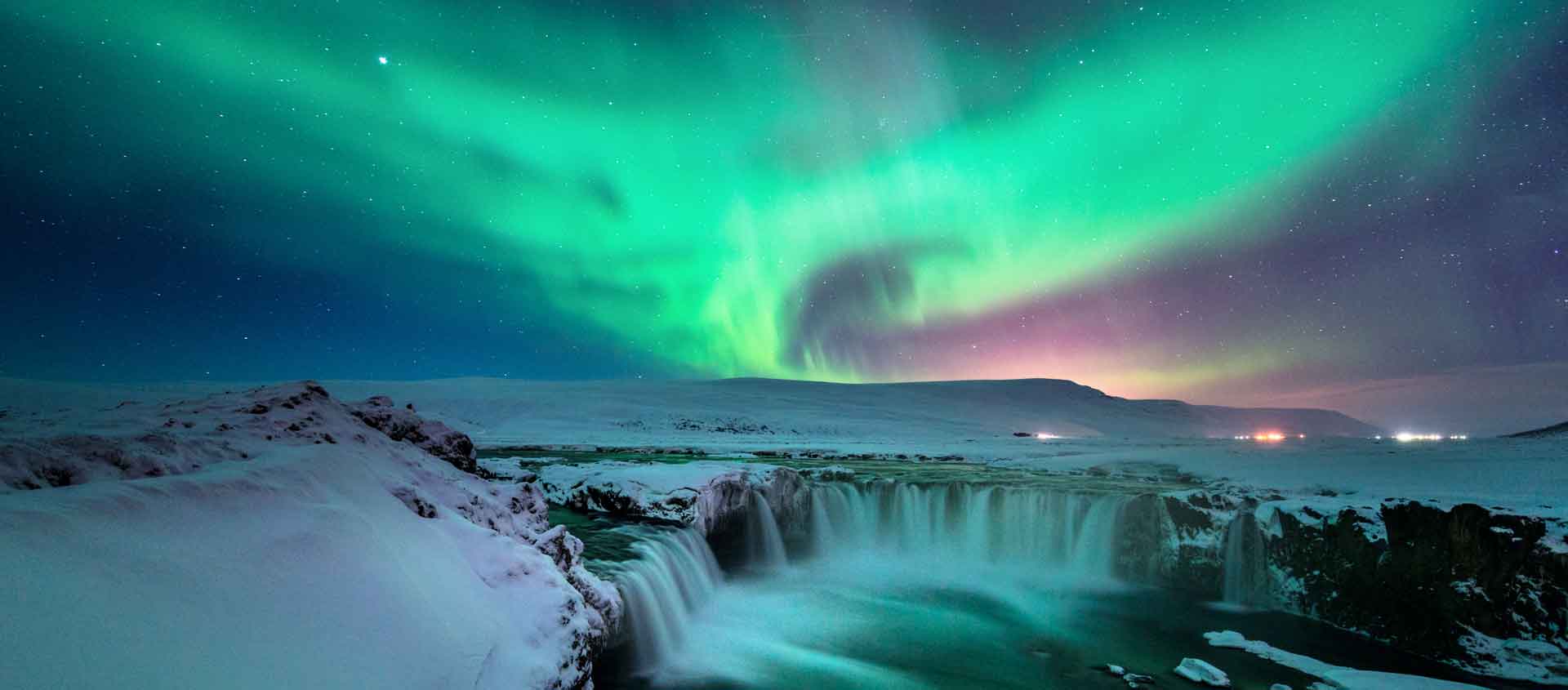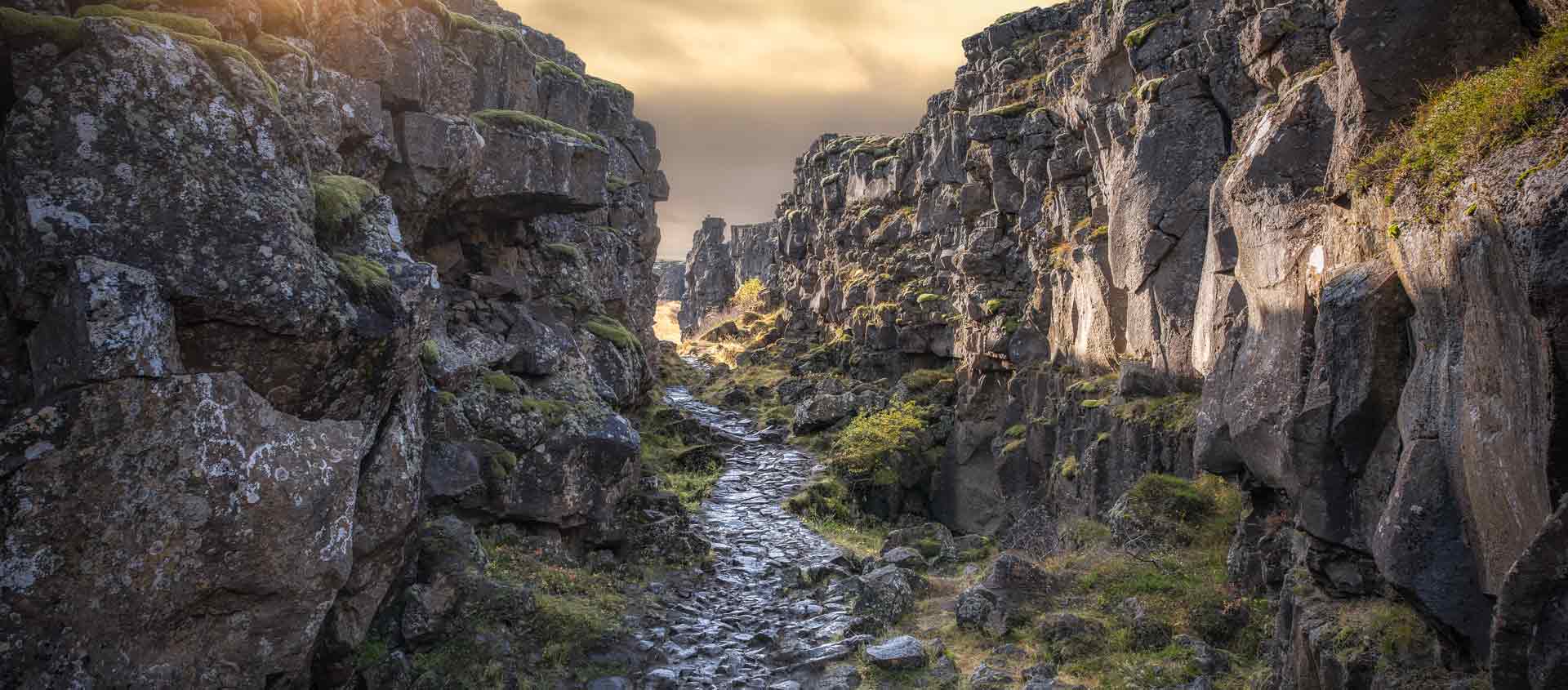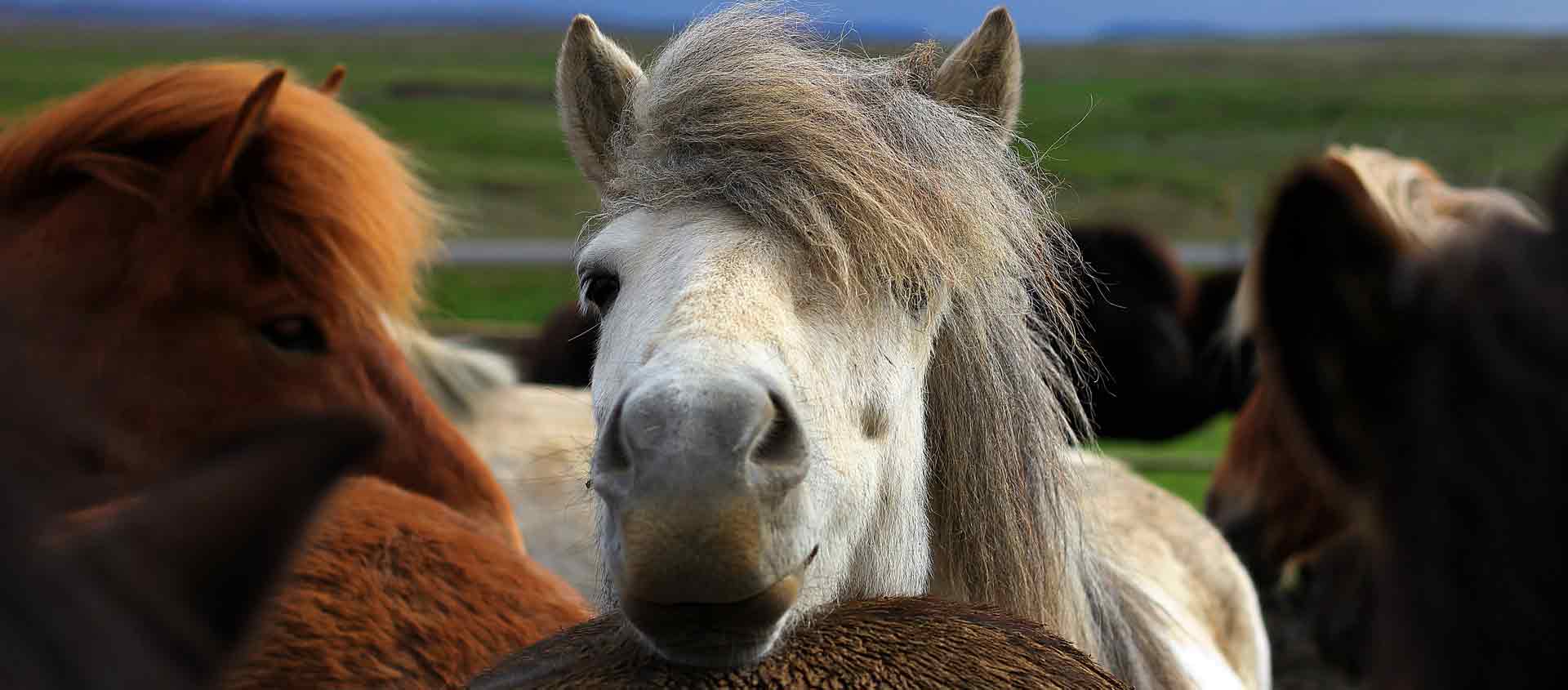Iceland in Spring
Iceland in Spring Tour
“I have fantasies of going to Iceland, never to return,” Edward Gorey once famously wrote. It’s a sentiment shared by many a visitor to this land of fire and ice, drawn in by the cinema of its landscapes, the poetry infused in its culture—qualities that are enhanced and distilled by visiting in the quiet of early spring, the season of snow, ice, and the ethereal northern lights. To travel around this magical island at that time of year is to experience constant novelty, from snow-covered spires of volcanic rock to ice-crusted thermal pools; from quaint fishing villages to a cutting-edge capital city. Join Apex on this 14-day Iceland in Spring Tour, walking on glaciers, hiking to frozen waterfalls, exploring ice caves, watching for the aurora, and contemplating just how a place can stir such strong feelings. Soak in the drama that is Iceland, where the landscape is as alive as the people, at a time when tourists are few and wonders are plentiful.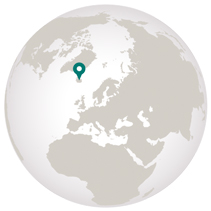
Destinations
- Travel by Air
- Travel by Road
- Travel by Boat
- Travel by Bullet Train
- Travel by Rail
- Travel by Dog Sled
-
Monday, April 1: Arrive Reykjavík, Iceland
Arrive early in Reykjavík, Iceland’s vibrant capital city, and transfer to your centrally-located hotel. Take the morning to settle in, then meet your fellow travelers and expedition team at a welcome lunch, followed by a tour of Perlan, or “The Pearl,” on Öskjuhlíð Hill. Originally a cluster of hot water tanks, Perlan was converted into an exhibition hall, planetarium, and observation deck. This afternoon, get acquainted with the city’s layout on a guided orientation tour, seeing the National Museum of Iceland and the iconic Hallgrímskirkja Church. This evening, head outside the city to the seaside village of Stokkseyri for a chance to see the aurora borealis. Overnight at Hotel Reykjavík Saga.
-
Tuesday, April 2: Reykjavík
After breakfast, explore the “Golden Circle,” the heart of Iceland’s Southern Region. First, visit Þingvellir National Park, a protected national shrine within the rift valley where the Eurasian and North American tectonic plates meet. This is also the site of Alþingi, Iceland’s parliament founded in 930 and the oldest surviving parliament in the world. Next, head to Friðheimar Tomato Farm, which manages to produce a full ton of tomatoes every day despite the dark winters. Visit their Icelandic horse stables followed by lunch at the restaurant. Next, visit the 100-foot Gullfoss, or “Golden Falls,” which gets its name from the golden color of its water as it churns up sediment and from the rainbows that often form above it. The last stop is the Geysir geothermal area. Geysir is the geyser for which all others are named, and is surrounded by bubbling cauldrons of superheated mud, steaming pools, and Strokkur, a geyser that erupts every 6-10 minutes. Dinner and overnight at Hotel Reykjavík Saga.
-
Wednesday, April 3: Reykjavík / Vík í Mýrdal
After breakfast, journey to the south coast, towards Vík í Mýrdal—or just Vík—the southernmost village in Iceland. En route, visit Sólheimajökull Glacier, an outlet glacier from the main ice cap Mýrdalsjökull. Take an easy glacier walk and see living proof of climate change in the newly formed, and rapidly growing, glacial lagoon in front of Sólheimajökull. Stop for lunch in Skógar and visit the nearby waterfall and Folk Museum. After lunch, visit Skógafoss waterfall, then take a walk along stunning Reynisfjara Black Beach. Continue to exquisite Vík, nestled in the middle of Myrdal Valley, between the high peaks of the Reynisfjall and Myrdalur Mountains and the sea. Dinner and overnight at Hotel Vík.
-
Thursday, April 4: Vík í Mýrdal / Hnappavellir
After breakfast, take a 4×4 expedition to the Mýrdalsjökull glacier for a snowmobile tour, exploring the spectacular ice formations. Head back into Vík for lunch and The Lava Show, a re-creation of a volcanic eruption, where molten lava is poured into the showroom and over ice. See the molten lava flowing, hear it sizzling, and feel the intense heat that radiates from it. This afternoon, continue east to Skaftafell, in the massive Vatnajökull National Park. Hike to Svartifoss waterfall, its black basalt columns make it easily one of the most beautiful waterfalls in Iceland. Continue on towards Svínafellsjökull glacier, with its deep blue ice, gleaming white snow, and veins of black ash, memories of eruptions past. Head to the nearby Fosshotel Glacier Lagoon for dinner and overnight.
-
Friday, April 5: Hnappavellir
Today, visit two glacial lagoons within Vatnajökull National Park. Fjallsárlón is the smaller of the two, and teems with glittering, newly calved icebergs. Listen for the loud, booming groan of these monoliths as they collide. Jökulsárlón is one of the deepest lakes in Iceland and is dotted with countless statuesque icebergs. Stroll on the famed Diamond Beach, so called because of the many icebergs that have washed ashore here, shimmering like jewels along the black sand. Take 4x4s up the Vatnajökull glacier, the largest in Europe at over 3,000 square miles. Explore the natural ice caves known for their crystal blue ice. Enjoy a picnic lunch with picturesque views of Hvannadalshnúkur, the country’s highest peak. Dinner and overnight at Fosshotel Glacier Lagoon.
-
Saturday, April 6: Vatnajökull / Akureyri / Mývatn
This morning, drive to Höfn for a flight to Akureyri, the country’s second most populous city and the “Capital of North Iceland,” situated on the longest fjord in Iceland, Eyjafjörður. Visit this jaunty town and enjoy lunch at a local restaurant. Head to the spectacular Goðafoss waterfall. In the year 1000, the Law speaker Þorgeir Ljósvetningagoði made Christianity the official religion of Iceland. After his conversion, Þorgeir is said to have thrown his statues of the Norse gods into this waterfall. Afterwards, drive east to the exquisite lake district of Mývatn. Dinner and overnight at Hotel Laxá.
-
Sunday, April 7: Mývatn District
Spend the day exploring the area around Lake Mývatn, which may be frozen this time of year. Visit Krafla Volcano, one of the country’s most explosive, having gone off 29 times since the country was first settled. Head to nearby Dimmuborgir, or the “Black Fortress,” an expanse of lava that solidified into dramatic towers, caves, and hidden chambers, looking more like a medieval castle than a natural rock formation. Nearby Námaskarð is a true geothermal wonder of hot sulfuric mud springs and steam vents. Natural black rivers and bubbling pools spew steam in a color-rich mineral landscape that looks like it is from outer space. Visit the Skútustaðir crater field, formed some 2,300 years ago when molten lava flowed over a wetland. The hot lava boiled the water and the steam pressure caused explosions, creating clusters of these rare pseudocraters. Enjoy lunch and a dairy tour at Vogafjós Farm. Spend the afternoon relaxing in the natural baths of Mývatn, a large active geothermal area situated just 65 miles south of the Arctic Circle. Dinner and overnight at Hotel Laxá.
-
Monday, April 8: Mývatn District / Siglufjörður
After breakfast, drive what is known as the Diamond Circle. Start with a stop at Dettifoss waterfall, referred to by some as “The Beast” in comparison to “The Beauty” of Goðafoss. Dettifoss is Europe’s most powerful waterfall, and large, too, at 300 feet across. Continue to Ásbyrgi (Shelter of the Gods), a remarkable horseshoe-shaped canyon. Viking settlers believed it to be a hoof-print formed by Sleipnir, Odin’s eight-legged flying horse. Our next stop will be the quaint fishing village of Húsavík with lunch at the harbor, overlooking the Skjálfandi fjord. Head west to Siglufjörður Village, the northernmost town of Iceland and the former capital of herring fishing in the North Atlantic. Dinner and overnight at Sigló Hotel.
-
Tuesday, April 9: Siglufjörður
When herring abruptly disappeared from Iceland’s north coast in the late sixties, Siglufjörður declined, but it is finding new attention from travelers smitten by its hiking trails, picturesque marina, and proximity to countless natural diversions. Stroll the town’s idyllic streets. Enjoy lunch at Torgið Restaurant, followed by a visit to the town brewery and the fascinating Herring Era Museum. Attend a “herring show,” stepping back in time as the herring girls salt and pack the fish into barrels, smoke their cigarettes, and gossip about handsome fishermen. Dinner at a local restaurant and overnight at Sigló Hotel.
-
Wednesday, April 10: Siglufjörður / Snæfellsnes Peninsula
After breakfast, head west toward Snæfellsnes. This will be a full-day drive, with scenic stops along the way. First, see Þrístapar, or “Triple Hillocks.” A beautiful landscape in its own right, Þrístapar is best known as the site of a double beheading in 1830. The couple was accused of murder, and their heads placed on stakes as examples for all. This turned out to be the last execution in Iceland. Enjoy lunch in Hvammstangi village and look for seals on the rocks and whales swimming in the fjord. Continue on to the Snæfellsnes Peninsula, which stretches 55 miles into the Atlantic, and is famed for its glacier-capped volcano, which Jules Verne set as the entrance to the Center of the Earth in his classic story. Dinner and overnight at Hotel Búðir on the south side of the peninsula.
-
Thursday, April 11: Snæfellsnes Peninsula
Spend the morning exploring the majestic peninsula of Snæfellsnes. First, drive to the beautiful fishing village of Arnarstapi. Beside Hellnar town stands Valasnös, a freestanding rock with one of Iceland’s most peculiar caves, Bastofa, located inside. Head into the National Park and see the basalt cliffs of Lóndrangar, nicknamed “the rocky castle.” Hike down to Dritvík Cove, once an important fishing center. Pass by Djúpalónssandur, or the Black Lava Pearl Beach, covered with thousands of finely polished small black stones, then arrive at Dritvík Cove, still strewn with iron remnants from a British trawler that wrecked here in 1948. This afternoon, visit the Shark Museum of Bjarnarhöfn before driving to the picturesque village of Grundarfjörður, with the famous, spire-like Kirkjufell, or “Church Mountain,” looming large behind it. Enjoy dinner in Grundarfjörður, then return to Hotel Búðir for the night.
-
Friday, April 12: Snæfellsnes Peninsula / Húsafell
Drive to the harbor at Ólafsvík Village and board a local boat for a morning of whale-watching. At this time of year, these waters offer one of the best opportunities anywhere to spot Killer Whales, which arrive to pursue spawning herring. Enjoy freshly caught fish for lunch before driving to Húsafell, nestled between a glacier and lava field. Dinner and overnight at Hotel Húsafell.
-
Saturday, April 13: Húsafell
Take 4x4s on a dizzying drive nearly to the top of Langjökull, Iceland’s second largest glacier. Visit Víðgemlir lava cave and then head to Deildartunguhver, the most powerful hot spring in Europe. If you take a shower anywhere within a 40-mile radius of the spring, you have already bathed in its hot water. After lunch, visit Hraunfossar & Barnafoss waterfalls before returning to Húsafell for a farewell dinner. End the evening with a private experience at Giljaböð Canyon Baths for a soak in their three geothermal pools under the stars with a chance to see the northern lights one last time. Overnight at Hotel Húsafell.
-
Sunday, April 14: Húsafell / Reykjavík / Depart
Head back to Reykjavík this morning. Enjoy lunch with your fellow travelers and have some free time to explore the city. This afternoon, head to the airport for your international flights home.

